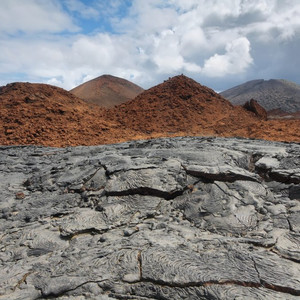"The Enchanted Isles"
It's hard to believe that the Galápagos Islands, an Ecuadorian archipelago located in the Pacific Ocean, were once considered a place of darkness and evil. But that is exactly what happened when Spanish sailors first discovered the islands in 1535. The sailors believed that the islands were inhabited by witches and monsters, so they named them "Las Islas Encantadas" or "The Enchanted Isles."
The Galápagos Islands have always been shrouded in mystery. The first sighting of the isles by Europeans was in 1535 when they were spotted by Spanish Bishop Tomás de Berlanga. He was on his way to Peru when his ship was becalmed, and he and his crew were forced to take to the small boats. They drifted for days and eventually landed on the Galápagos. Berlanga described the isles as "enchanted", and they have held that mystique ever since.

The Theory of Evolution

The islands remained largely uninhabited until the mid-19th century when whalers and sealers began using them as a base for their operations. In 1835, Charles Darwin visited the Galápagos as part of his voyage on the HMS Beagle and was intrigued by the unique wildlife he found there. His observations on the Galápagos would later form the basis of his theory of evolution.
Charles Darwin was not the first European to visit the islands, but he was the first to take a close interest in the wildlife that lived there. In particular, he was fascinated by the finches that inhabited the islands. Darwin observed that each island had its own unique species of finch and that these finches differed slightly in their appearance and habits. He also noticed that some of the finches were better equipped to survive in their particular environment than others. Over time, Darwin came to believe that these finches had evolved from a common ancestor and that their differences were due to the process of natural selection. This theory would later form the basis for his groundbreaking work on evolution, The Origin of Species. Today, the Galápagos Islands are still home to a variety of finches, as well as many other unique species of plants and animals. They remain an important site for scientific research and a reminder of the power of Charles Darwin's observations.
Forming the Archipelago

The Galapagos Islands are located in the Pacific Ocean, about 1000 kilometers (620 miles) from the coast of Ecuador. The archipelago is made up of 13 large islands, six smaller islands, and 107 rocks and islets. The Galápagos Islands were named after a Spanish captain who spotted them in 1535. The name "Galápagos" comes from the Spanish word for "saddle," which is what the shape of the islands reminded him of.
The islands were formed by volcanoes that erupted over a period of several million years. The oldest island, Española, is thought to be about 3.5 million years old, while the youngest island, Isabela, is only about 600,000 years old. The Galapagos Islands are located on the Nazca Plate, which is being subducted under the South American Plate. This process has created a hot spot under the plate, which has resulted in the volcanoes that form the islands. The volcanoes are still active today and there have been eruptions as recently as 2015.
Fascinating Wildlife

A trip to the Galápagos Islands is a once-in-a-lifetime opportunity to see some of the world's most unique wildlife up close. The Galápagos Islands are world-renowned for their abundance of wildlife, and their uniqueness has made them a Mecca for biologists and evolutionists for centuries. The archipelago is situated in the Pacific Ocean, about 1000 kilometers off the coast of Ecuador, and it is home to an extraordinary array of plant and animal life. In addition to its many endemic species, the Galápagos is also home to giant tortoises, flightless cormorants, penguins, and countless other species of birds, reptiles, and mammals. But perhaps the most iconic residents of the Galápagos are the blue-footed boobies, which can be seen strutting their stuff along the sandy shores.

The islands provide an opportunity to study evolution in action, as the isolation of the various island ecosystems has resulted in the development of many unique species. The Galápagos is also home to one of the world's largest protected areas, making them a key location for wildlife conservation efforts. In recent years, these efforts have focused on protecting the islands' delicate ecosystem from the introduction of non-native species. As a result of these efforts, the Galápagos remains one of the most pristine and important wildlife habitats on Earth.

Tales of Inspiration

The Galápagos islands have long been a source of wonder and inspiration, and their unique wildlife has been the stuff of legend. sailors for centuries have told tales of giant turtles, iguanas, and whales, and of the strange creatures that live in this remote corner of the world. In recent years, these tales have been brought to life in several books, including The Voyage of the Beagle by Charles Darwin, The Island of the Blue Dolphins by Scott O'Dell, and Survival of the Fittest by James Dyson. In Survival of the Fittest, Dyson chronicles the story of how a group of sailors survived for nearly a year on a deserted island after their ship was sunk by a whale. These stories are not only a testament to the power of the natural world but also a reminder of the strength of human survival. In the face of adversity, these sailors persevered, and their tales continue to inspire new generations.
Exploring the Galápagos Islands
Today, the Galápagos Islands are a popular tourist destination, known for their unique wildlife and pristine natural beauty. But the islands' rich history is often overshadowed by its more recent successes. The Galápagos Islands offer a unique glimpse into the past, and a reminder of the importance of conservation. With its rich history and abundance of wildlife, the Galápagos Islands are truly a place like no other.













Hozzászólások